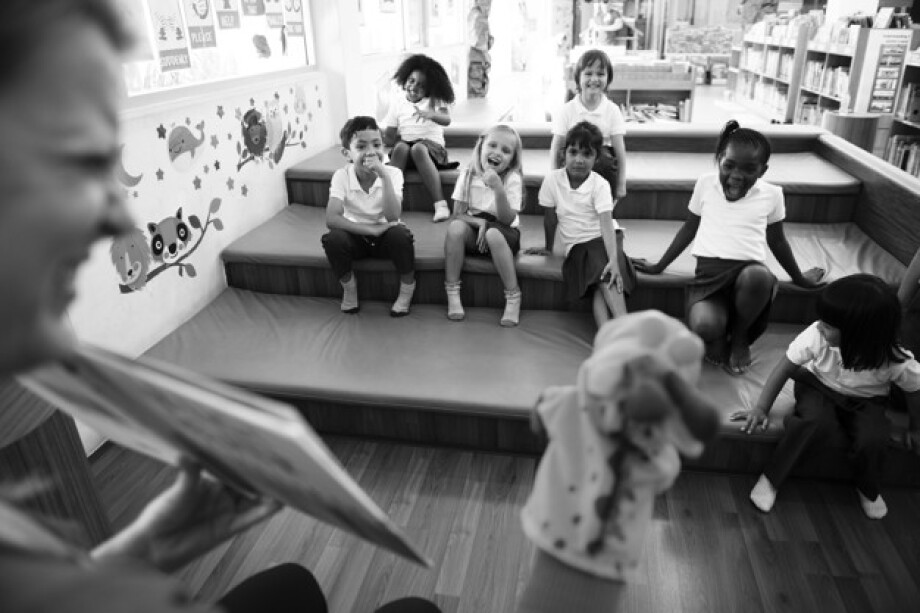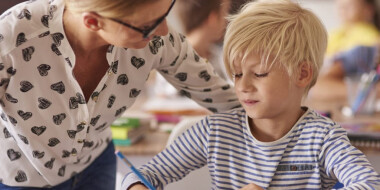What is a puppet?
According to the Oxford Dictionary, a puppet is “a movable model of a person or animal that is typically moved either by strings controlled from above or by a hand inside it”.

Why do we use puppets?
Puppets are a great tool to use for teaching English. You can use them to motivate and encourage children to speak English. They help shy children to “open” and feel more comfortable, safe and relaxed.
Puppets serve as a psychological anchor because they help to overcome the language barrier. It is kind of a mediator between a teacher and a young learner. Puppets speak only English, and as they become a friend in the classroom, children have to speak English to interact with him or her. This way they help a teacher to teach.
How do we use puppets?
- Hold the puppet toward your ear if you are listening to him/her or toward the children so there is eye contact and the conversation looks natural.
- Move the puppet’s mouth as he/she speaks.
- It is nice if you can change your voice as the puppet has its own voice.
- Make sure it is always present in class even if you don’t use it actively at a particular stage. It’s beneficial for children to see the puppet is always with them as a good friend.

When can we use puppets?
Actually, it can be used at different stages, e.g. when you present (provide models) or practise new material, during games, as a reward for hard work or good behaviour, in role plays. Here are some ideas for a lesson.
- Routines
As we all know you need to set some routines to manage children. Use the puppet to teach “Hello” and “Good bye”, to ask “How are you?” Children are always interested in joining the conversation and interacting with the puppet.
- Storyline
If you have some activities that are not connected, puppets can serve as a “bridge” between steps of the lesson. As a result, you can have a storyline in every class.
- Comfort
Children can have non-verbal interaction with the puppet. They can hug or stroke each other, sit together, “high-five” each other, show different emotions that you can’t demonstrate or something a child keeps in.
- Attention
Puppets can keep the attention of kids by interacting with them, showing emotions, doing funny and unpredictable things unexpectedly.
- Tension
Puppets help to relieve tension. If you see children are upset or they do not want to do the task, or angry, or do not understand something, use puppets to show it’s fine to make mistakes or be wrong. For example, pretend the puppet doesn’t understand something or does the exercise the wrong way. Or have children become a teacher and explain everything to the puppet.
- Act out
Children love acting out and pretending to be someone else and it’s considered one of the most effective ways of learning a foreign language. However, if young learners use puppets, they can become even more engaged, focused and alive. In addition, they can create their own stories, for example, with their favourite toys.
- Games
With young learners we usually practise the new language in games, so include the puppet in them. For example, children should help the puppet find the way from the maze by saying the target words from the pictures. Or play “Puppet says” to practise TPR. Or play “Hide and seek” with the puppet to practise prepositions or furniture vocabulary.
8. Reward.
Every lesson you can nominate a child for being the most active or engaged or disciplined and give them a prize connected with a puppet. For example, they can hold the puppet in the next lesson, control it in the next activity or greet everyone with it.
- Stories or songs
If you have a story lesson, the puppet can sit with you and help to emphasize the most important points or exaggerate emotions.
Sing a song with a puppet to help shy children sing. The funnier the puppet sings, the more comfortable children feel to join in too.
Children can draw pictures, postcards or write letters (if they already can) to the puppet on the topic of the lesson, to practise the target language. For example, draw a birthday card or write about your holiday.
I also recommend you to watch these videos about using puppets.






 Анна Тетерина
Анна Тетерина 
 Мария Коврова
Мария Коврова 
 Александра Лунева
Александра Лунева 
 Мария Лазарева
Мария Лазарева 
 Анастасия Яковлева
Анастасия Яковлева 
 Элизабет Мунтян
Элизабет Мунтян
You’re so awesome! I do not suppose I have read through a single thing like that before. So nice to discover somebody with a few unique thoughts on this topic. Really.. thanks for starting this up. This website is something that’s needed on the internet, someone with a bit of originality!